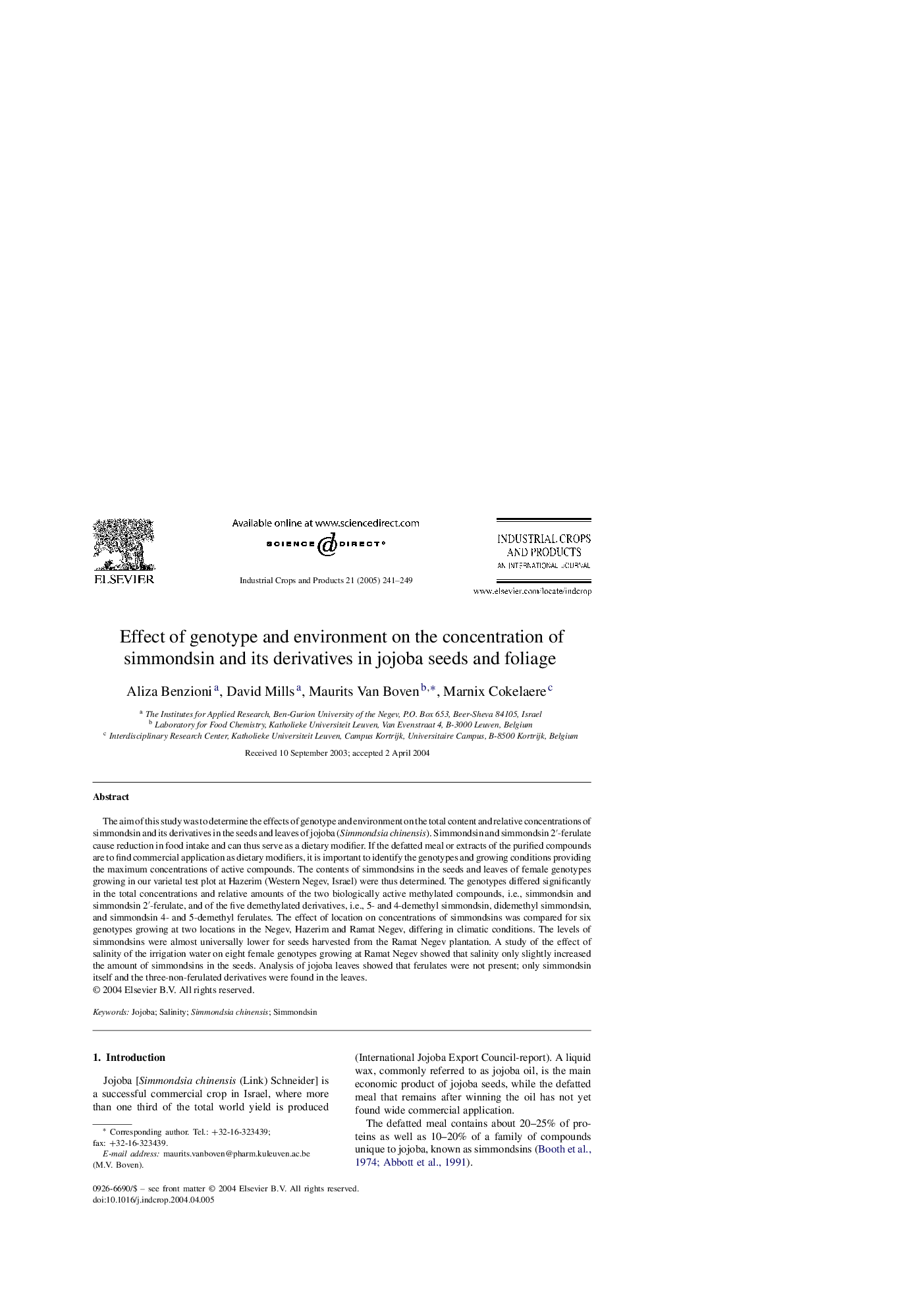| Article ID | Journal | Published Year | Pages | File Type |
|---|---|---|---|---|
| 9474147 | Industrial Crops and Products | 2005 | 9 Pages |
Abstract
The aim of this study was to determine the effects of genotype and environment on the total content and relative concentrations of simmondsin and its derivatives in the seeds and leaves of jojoba (Simmondsia chinensis). Simmondsin and simmondsin 2â²-ferulate cause reduction in food intake and can thus serve as a dietary modifier. If the defatted meal or extracts of the purified compounds are to find commercial application as dietary modifiers, it is important to identify the genotypes and growing conditions providing the maximum concentrations of active compounds. The contents of simmondsins in the seeds and leaves of female genotypes growing in our varietal test plot at Hazerim (Western Negev, Israel) were thus determined. The genotypes differed significantly in the total concentrations and relative amounts of the two biologically active methylated compounds, i.e., simmondsin and simmondsin 2â²-ferulate, and of the five demethylated derivatives, i.e., 5- and 4-demethyl simmondsin, didemethyl simmondsin, and simmondsin 4- and 5-demethyl ferulates. The effect of location on concentrations of simmondsins was compared for six genotypes growing at two locations in the Negev, Hazerim and Ramat Negev, differing in climatic conditions. The levels of simmondsins were almost universally lower for seeds harvested from the Ramat Negev plantation. A study of the effect of salinity of the irrigation water on eight female genotypes growing at Ramat Negev showed that salinity only slightly increased the amount of simmondsins in the seeds. Analysis of jojoba leaves showed that ferulates were not present; only simmondsin itself and the three-non-ferulated derivatives were found in the leaves.
Related Topics
Life Sciences
Agricultural and Biological Sciences
Agronomy and Crop Science
Authors
Aliza Benzioni, David Mills, Maurits Van Boven, Marnix Cokelaere,
